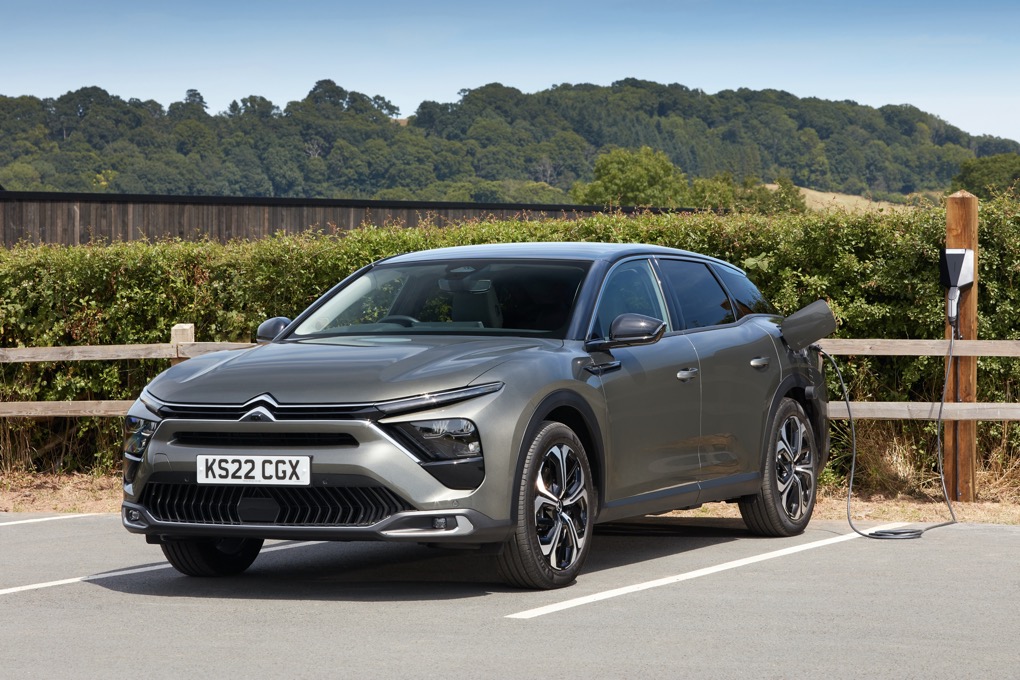There are a few reasons for this, but the biggest factor is depreciation. It's quite a tedious way of starting a review, but bear with us as this is vital stuff.
If you are buying the car using finance such as a lease or PCP, the amount the car loses in value over the time you own it will be by far the biggest cost. And the large Citroens used to lose value faster than any other car on the market. It meant, for example, that a C5 or C6 used to be more expensive to own than a BMW 5-Series or Mercedes E-Class. You needed to be a real fan to choose one, and many company car fleets would simply refuse to let you tick that box.
So we fully expected this to be more of the same. We assumed the C5 X would be an oddball quirk that would only ever be seen on the drives of Citroen employees, baffled people who hired them and expected a 'VW Passat or similar', and the odd driver who saw one of the ex-rental cars for sale at the local dealer and though it looked like a bargain.
But something odd has happened. The C5 X is now one of the slowest depreciating cars in its class according to the independent experts who predict these sort of things. It loses less value than cars such as the Mazda 6, Skoda Superb and even the Volkswagen Arteon. How has this turnaround happened? Has the Citroen MD got pictures of the industry's residual value setters in compromising situations?
Apparently not. Instead there has been a wholesale rethink of the way the C5 X is sold to minimise the depreciation. There is a promise not to sell to rental fleets, and the big discounts are history. Instead of offering thousands off the list price, Citroen is instead making the price low in the first place. In fact, it seems a bit of a bargain. The entry level petrol car is the same sort of price as a mid-level Skoda Octavia. The PHEV, which is the car which interests us most of course, is very competitively priced with a plug-in Golf. And the Citroen is a much bigger and more comfortable car.
Those boring sums mean that the big Citroen could be back in contention. So now we can look at the rest of the car and see if it deserves to be on your shortlist.
Firstly, there is still a degree of quirkiness, as you'd expect. The C5 X shuns a traditional 'three-box' saloon car shape for a silhouette that's part-estate-car, part coupe-SUV. It rivals anything from a Volkswagen Arteon eHybrid to Citroen's own C5 Aircross Hybrid.
Actually, the Citroen C5 Aircross is worth mentioning as the C5 X pinches that car's structure, its petrol engine and plug-in hybrid system.
Under the long bonnet sits a 178bhp 1.6-litre petrol engine, which is supplemented by an 81.2kW electric motor and a 12.4kWh battery pack, giving 222bhp. Citroen claims a CO2 figure as low as 30g/km meaning business users will be paying 12% company car tax, and a 34-mile electric range.
Our test drive was in the searing heat and the air-con was at full chat, and the range seemed to be nearer 20 miles but there's no reason to doubt it wouldn't be nearer to the promised total in more moderate weather. In fully electric mode the Citroen is perfectly happy too, never seeming strained. In hybrid mode the C5 X also slips between petrol and electric power very well, too, with the engine only getting a little coarse on steep uphill roads.
Citroen also makes the job of plugging in a bit easier as there's not only a smartphone app, but if the car recognises it hasn't been connected to a charger for more than 10 days it'll remind the driver to do so. The C5 X gets a 7.4kW on-board charger meaning a full charge will take less than two hours. Moreover, just as with its mechanically-similar sister cars like the C5 Aircross and Vauxhall Grandland Hybrid-e, the C5 X can charge its batteries while driving (to the detriment of fuel economy).
Big Citroens of the past have been known for very comfy suspension, and the C5 X is no different. The company has realised that this is an area where they can lead, and some buyers are sick of sporty springs and low profile tyres which might give you an extra tenth of a second on a race circuit but mean you jar your spine on every pot hole. As a result the C5-X features special dampers on the suspension to give a pillowy-soft ride, extra squidgy seats and, with the plug-in hybrid C5 X, a new electronically-controlled suspension system.
We've been moderately impressed with the comfort in models like the e-C4 and C5 Aircross PHEV, but the C5 X is in a different league. On all sorts of roads whether its battered city streets, scarred country roads or super-smooth motorways, the C5 X has the type of ride quality that you would expect in a car costing nearly 10 times as much. Factor in thicker glass for better sound insulation on our top-spec Shine Plus model and around 30 miles of pure-electric running (up to speeds of 81mph), and the C5 X is outstandingly comfortable and refined.
It doesn't go to pot if you drive the C5 X enthusiastically, either. The steering is a little on the lifeless side, but the car grips well and always feels secure. There are different driving modes including a 'Sport' setting that firms up the suspension, but really the C5 X is more at home being driven leisurely.
As for space inside, there's plenty of it upfront and there's tons of rear leg and headroom too. The boot doesn't quite offer the space of a traditional estate car like the Volkswagen Passat GTE or an SUV like the C5 Aircross, but at 485 litres (1,580 litres with the seats down) it's still of a decent size. In fact, one of the design parameters is that the car must be able to fit a washing machine in the boot without folding the seats. Remember that, when you need to go to the tip.
The C5 X feels a bit Volkswageny in terms of quality too. It easily has the most tactile and well-screwed-together interior of any Citroen on sale. The dashboard has a lovely mixture of squidgy plastics, stitched leather (the stitches are in the shape of Citroen's double-chevron badge) and wood trim giving a pleasingly quality feel. There's also a new version of Citroen's infotainment system which is both easier to use and looks better than before.
Citroen has pulled off a bit of a coup with the C5 X as it could have felt like a big car with an identity crisis, but it doesn't. It has pulled off a miracle with the residual values and the pricing makes it a properly tempting alternative to something altogether more tedious. And if you are sick of rock-hard suspension and race seats, the C5 X is a real relief.
The only sticking point could be down to yet more boring figures. The 12% benefit-in-kind rate for company car drivers will seem fantastic to anyone coming out of a diesel, and is competitive for this size of car. But alternatives such as the Toyota RAV4 PHEV or a host of smaller hatchbacks will slash the bill still further as they have longer electric ranges and lower emissions. If you are happy to pay that extra to have the brilliantly different and practical C5 X, you can be comfortable with your decision.










.jpg)
.jpg)
.jpg)


.jpg)
.jpg)



.jpg?width=1500&height=1000)




